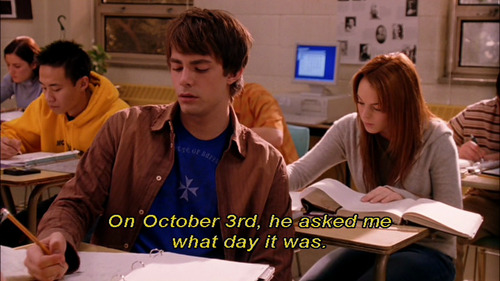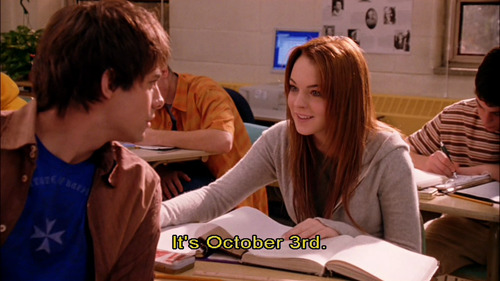Menachem Bluming Muses: How To Explain Death To Children After Grandpa’s Passing
Menachem Bluming Muses: How to Explain Death to Children After Grandpa’s Passing
Remember when your little brother was born? After being in your mother’s tummy for such a long time, he finally came out to be with you and the family. How exciting. You’d been waiting for so long to meet him and play with him, and then he finally arrived.
Your baby brother was very comfortable inside mummy’s tummy, where it’s warm and he had everything he needed. But he couldn’t stay there forever. When it was time, he came out to be with you.
In a strange way, death is similar to birth. We leave the world we know and enter the great unknown world outside. All the people who have passed away are in that peaceful and happy place. Just as you were waiting for your brother to come and be with you, the souls of past generations were waiting for your grandfather to join them. Now they are all together. We miss them. But there’s nothing to be scared of.
Remember you used to talk to your baby brother, even before he was born? He heard you, though he couldn’t answer and you couldn’t see him. You can talk to your grandfather too. And you can send him a present. Every time you do something good, listen to your parents, do a mitzvah, give charity, learn Torah, think how proud your grandfather would be. At that moment, his soul in heaven gets a good feeling, a gift from you.
Just like he smiled every time you visited him, his soul smiles every time you think: “Grandpa would love seeing me do this." So keep on making him proud.
Mendel (Menachem) Bluming Based on Rabbi Aaron
More Posts from Lil-history-egg and Others

Having to bite the bullet and reach out for help.
GC waitlists are long and Doctors simply do not care enough to help trans people when they need it.
I am tired of arguing and begging and getting progressively more and more poorly, of the mental pain that comes with being attached to something that doesn't belong to me.
Private healthcare is the last attempt I have at getting the help I need before it is too late.
Any shares or donations mean more to me than you could possibly know. 🖤🖤
I am 100% convinced that “exit, pursued by a bear” is a reference to some popular 1590s meme that we’ll never be able to understand because that one play is the only surviving example of it.

I thought this was really good, so I wanted to share. Some of the images were missing, so I did my best to substitute based on the description.
Since the ancient Maya have been added to the Key Stage 2 national curriculum for History (non-European Study), there’s been a ‘mushrooming’ of online resources covering the topic. Most of which are downright awful!
After the recent flawed news story about a teenager finding a Maya site, I thought it an apt moment to let both teachers who are teaching the Maya as well as the general public know what they need to be looking out for to confirm a resource’s unreliability
Beware!
Here are 10 tell-tale signs that expose unknowledgeable sources
1. The term ‘Mayan’ is used instead of ‘Maya’

The term ‘Mayan’ is ubiquitously used by ill-informed sources: ‘Mayan people’, ‘Mayan pyramids’, ‘Mayan civilisation’…
All Maya specialists -and, for that matter, all non-specialists who’ve read a book or two on the ancient Maya- know that the right word is Maya.
Their calendar is called the ‘Maya calendar’, their civilisation is called the ‘Maya civilisation’, their art is called ‘Maya art’…
The only time you should use the adjective ‘Mayan’ is when you are talking about their languages, the ‘Mayan languages’.
So, if you see ‘Mayan people’, ‘Mayan pyramids, ‘Mayan art’, ‘Mayan civilisation’, etc, on a publication (website or magazine), you can be sure the person who wrote the article doesn’t know a thing about the ancient Maya.
2. The image of the Aztec calendar stone is presented as the Maya calendar

Unscrupulous sources will use the ‘Sun Stone’ to illustrate texts about the Maya calendar.
Unfortunately, the famous sculpture is Aztec. Not Maya.
Using the ‘Sun Stone’ to talk about Maya calendar system is like using photos of theElizabeth Tower at Westminster (AKA ‘Big Ben’), which was completed in 1859, to illustrate time keeping in ancient Rome!
And yes I have even seen this image adorning the front cover of books on the Maya! Beware! Which leads nicely onto point 3-
3. The Maya are identified as the Aztecs

This confusion is very common but the truth is the Aztecs were very different to the Maya. They spoke a different language and had a different writing system.
Also the Maya civilisation began at least 1500 before the Aztecs.
The Aztec capital of Tenochtitlan is as far away from the great Maya site of Tikal as London is from Milan, Italy!
Stating the Maya were the same as the Aztecs, is basically saying that all Europeans are the same, having the same language, culture and beliefs…
Would you like to see an image of Stonehenge on the front cover of a book on the French? I think not!
Then we get the Egyptians….
4. Maya pyramids are said to be similar to Egyptian pyramids

I am afraid not!
Firstly, the ancient Maya and ancient Egyptians lived during different time periods. The time of pyramid building in Egypt was around 2000 years earlier than the earliest Maya pyramid.
Secondly, Egyptian pyramids have a different shape and use to those of the Maya.
Maya pyramids are not actually pyramidal! They have a polygonal base, but their four faces do not meet at a common point like Egyptian pyramids. Maya pyramids were flat and often had a small room built on top.
Pyramids in Egypt were used as tombs for the dead rulers, for the Maya, though the pyramids were mainly used for ceremonies carried out on top and watched from below.
Lastly, they were built differently. Maya pyramids were built in layers; each generation would build a bigger structure over the previous one. Egyptian pyramids, on the other hand, were designed and built as a single edifice.
5. It is claimed that the Maya mysteriously disappeared in the 10th century AD

Uninformed sources talk about the ‘mysterious’ disappearance of the ancient Maya around the 10th century AD., which mislead people to think that the Maya disappeared forever….
Firstly, the Maya did not disappear. Around 8 million Maya are still living today in various countries of Central America (Mexico, Guatemala, Belize, El Salvador and Honduras); in fact half of the population of Guatemala is Maya.
Although they do not build pyramids like the ancient Maya did, modern Maya still wear similar dress, follow similar rituals and some use the ancient Maya calendar. I am sure they would all like to assure you that they have definitely not disappeared!
We know now that what is called ‘Classic Maya Collapse’ was actually a slow breakdown, followed by a reconstruction, of a number of political, economical and cultural structures in the Maya society.
Archaeologists see cities being abandoned over the course of the 9th, 10th and 11th centuries, and people travelling north into the Yucatan Peninsula (Mexico) building new great cities such as Mayapan, which was occupied up until the 15th century.
Secondly, there was nothing mysterious about it! A number of associated factors were at play.
There was a severe drought in the rainforest area that lasted decades, so people moved north where water sources were more easily available. The competition between waring factions and cities for natural resources led to increased warfare. Which, in turn, led to the breakdown of trade networks.
All this was likely exacerbated by political and economical changes in Central Mexico.
So, very much like the French did not disappear after the French Revolution -although they stopped building castles and some big political, economical and cultural changes occurred in the French society- the Maya did not mysteriously disappear around the 10th century.
6. The Maya are portrayed as blood-thirsty sacrifice-loving psychos

The Maya are often portrayed in the media and popular culture as blood-thirsty (see for example Mel Gibson’s 2006 Apocalypto), so the commonly accepted -and oft-repeated- idea is that the Maya carried out lots of sacrifices.
Actually, there is barely any trace of sacrifice in the archaeological record of the Maya area. The rare evidence comes from pictorial representations on ceramics and sculpture.
Warfare amongst the Maya was actually much less bloody than ours and no, they did not use a real skull as a ball in their ballgame! And no the loser was not put to death!
In warfare, they did capture and kill opponents, but it was on a small-scale. Rulers boasted of being “He of five captives” or “He of the three captives”.
The heart sacrifices that were recorded by the Spanish chroniclers were those of the Aztecs.
It is also important to keep in mind that the Spanish Conquistadors had lots of incentives to describe the indigenous people of the Americas as blood-thirsty savages.
It made conquest and enslavement easier to justify (see the Valladolid Debate) so lots of stories were exaggerated.
And who are we to judge when we used to have public spectacles of people being hanged or having their heads chopped off and placed on spikes on London Bridge!
7. The ancient Maya predicted that the world would end on 21 December 2012

The 2012 phenomenon was a range of beliefs that cataclysmic events would trigger then end of our world on December 21st.
This date was regarded as the end-date of a 5,126-year-long cycle in the Maya Long Count calendar and it was said that the ancient Maya had prophesied the event.
This is not true and all Maya people today and Maya specialists know this!
Very much like a century and a millennium ended in the Christian calendar on December 31st 1999, a great cycle of the Maya Long Count -the 13th b’ak’tun– was to end on 21 December 2012.
In Maya time-keeping, a b’ak’tun is a period of roughly 5,125 years.
Only two Maya monuments –Tortuguero Monument 6 and La Corona Hieroglyphic Stairway 12– mention the end of the 13th b’ak’tun. None of them contains any speculation or prophecy as to what would happen at that time.
While the end of the 13th b’ak’tun would perhaps be a cause for celebration, the next day the Maya believed that a new cycle -the 14th b’ak’tun- would begin; much like our New Year’s Eve.
In fact, in the temple of Inscriptions at Palenque, where we find the tomb of King Pakal, it was written that in AD 4772 the people would be celebrating the anniversary of the coronation of their new King Pakal!
8. The Maya are described as primitive people

The Maya created an incredible civilization in the rainforest where it is extremely humid, with lots of bugs and dangerous animals and little water.
There they built spectacular temples, pyramids and palaces without the use of metal tools, the wheel, or any pack animals, such as the donkey, ox or elephant.
The Maya were the only civilization in the whole of the Americas to develop a complete writing system like ours.
They were only one of two cultures in the world to develop the zero in their number system and so were able to make advanced calculations and became great astronomers.
The Maya were extremely advanced in painting and making sculptures, they played the earliest team sport in the world and most importantly, for me anyway, is that we have the ancient Maya to thank for chocolate!
So no, they were definitely not primitive!
The problem with this view of the ancient Maya is that their achievements are then explained by the help of Extra-terrestrial beings or other civilisations.
9. The great achievements of the Maya are in thanks to the Olmecs

The Olmec civilisation is an earlier culture located along the Gulf coast of Mexico.
This myth of the Olmecs being a ‘mother culture’ to the Maya and other cultures in Mesoamerica had been questioned over 20 years ago and has been long put to rest.
Excavations have shown that they were many other cultures, other than the Olmec living in Mesoamerica before the Maya and that rather than a ‘mother culture’ we should be looking at ‘sister cultures’ all influencing each other.
Furthermore, Maya achievements in hieroglyphic writing and calendrics which no other culture in Mesoamerica had seen or used, indicate that they were much more innovators than adopters.
So, if the resource mentions the above, then it is obvious that they are not specialists and are using redundant information written over 20 years ago.
10. Chichen Itza is used as the quintessential Maya site

Chichen Itza was inhabited quite late during the Maya time period, about 1400 years after the first Maya city and is not purely Maya.
The city was quite cosmopolitan and was greatly influenced by Central Mexico, particularly the Toltecs, who may have lived there.
Therefore, its architecture and art -such as the ‘chacmools‘ or the ‘tzompantli‘ (AKA ‘skull-racks’) actually are Central Mexican, and not Maya, features.
A much better example of a typical Maya city would be Tikal, which was occupied for more than 1500 years.
So, if all you see on a website is about Chichen Itza, chances are this is not a reliable source of information about the ancient Maya and your ‘charlatan alarm-bells’ should go off!

So I took this http://www.celebritytypes.com/gender/test.php gender roles test and this was my result. Hehe.
Help cheer me up?
I was not allowed to audition for district band today because I forgot to do a form and I've been crying off and on for the last hour while I have been waiting for my mom to come pick me up, so if any of you care about me in the slightest, please just send a little something. Music means a lot to me and I'm absolutely devastated right now. Heart broken. Please send a little kindness my way.

A lot of the time when I reblog jewellery on here, it’s art nouveau jewellery, because I really like art nouveau. In general, and in jewellery in particular. And most of that is the aesthetic. I like the natural forms, I like the twisty curly bits, I like the use of materials, I like how a lot of art nouveau jewellery is using metals and stones and other materials to create a specific form, an insect or a plant or a goddess or even sometimes nature scenes. I like …
I feel like a lot of the time with jewellery, it feels like ‘I’m going to use this object to show off the size and value of my pretty rock’. And there’s nothing wrong with that. Some of those rocks are indeed gorgeous. But art nouveau feels more ‘I’m going to use these pretty rocks, and several other things, to create the impact of this object’? I just love the use of materials, glass and enamel and colour, as well as precious stones and metals, to create a form or a scene.
Like, you get a diamond ring, it’s a diamond ring. But you get something like a dragonfly brooch (Louis Acoc):

Or a lilypad hair comb (Rene Lalique):

Or a wisteria branch (Georges Fouquet):
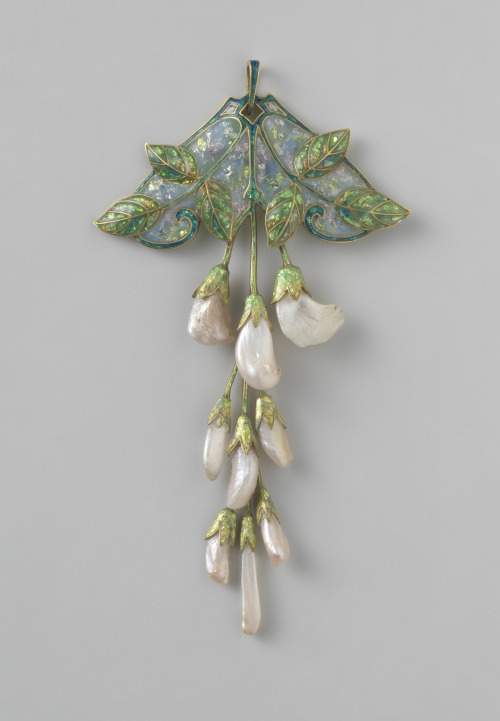
And it’s a whole creation. A little wearable piece of art.
And I don’t want to sound too dismissive. I know the craftmanship and skill and artistry that goes into any kind of jewellery making. That diamond ring took skill I will never have. I just.
I like the emphasis on form more than material that you get with art nouveau. Like normally you hear ‘glass jewellery’, ‘enamel jewellery’, and it’s cheap, it’s frowned upon, but in art nouveau it’s what that glass or enamel was used to make that’s the important part:
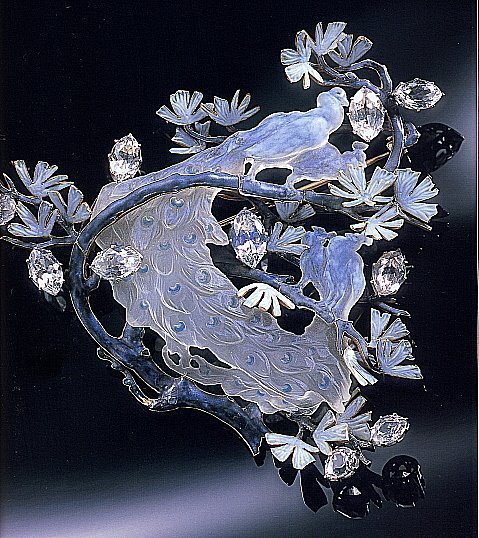
(Rene Lalique)
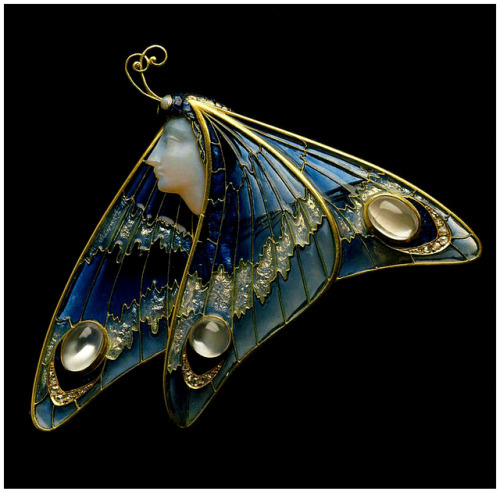
(Eugene Feuillatre)
Anyway. In summary, I really, really, really like art nouveau jewellery?

Art Nouveau doors in Brussels ❦
Poland and Italy's Friendship Explains A Thing
PIEROGI PIZZA! GREAT PIZZA! CHEESY POTATO AND ONION ON CRUST! My area is so German and Polish we have to put potatoes even our Italian food. Like, we have pierogies at every festival and kielbasa is served in school, also haluski, but all three can be found in both places, and they haven't had sauerkraut in either but you can find it at bake sales (???? Why? ?? Everything will taste like sauerkraut???) and everyone over fifty has their preferred way of making it. Basically, my area is vvv German and Polish and pierogi pizza is great. Haven't had any in ages, but it's great.

A treat for you! Happy Halloween.

It shrank and got frozen on it's way here I think but thanks‼‼‼‼‼‼‼‼
-
 rainingmoondrops liked this · 3 years ago
rainingmoondrops liked this · 3 years ago -
 lil-history-egg reblogged this · 3 years ago
lil-history-egg reblogged this · 3 years ago -
 menachem-bluming reblogged this · 3 years ago
menachem-bluming reblogged this · 3 years ago
Hello! I'm Zeef! I have a degree in history and I like to ramble! I especially like the middle ages and renaissance eras of Europe, but I have other miscellaneous places I like too!
270 posts
